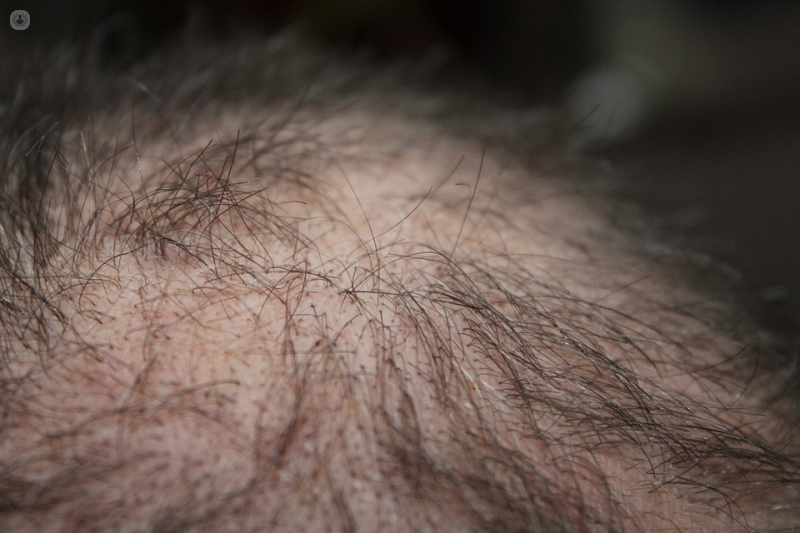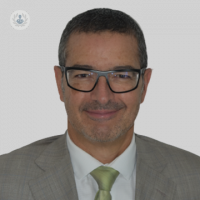Hair loss: An expert’s guide
Written in association with:The prospect of losing hair is worrying to many people, especially since it is a common problem. While often associated with men of advancing age, hair loss can affect both sexes and can begin at any time of life. There are a number of types of hair loss and a range of causes, but all can result in a significant impact on self-esteem. Luckily, there are treatment options as leading plastic surgeon and hair transplant specialist Dr Greg Williams explains.

Types of hair loss
On average, humans have over 5 million hair follicles, with about 100,000 on the scalp. While loss of scalp hair is the most common cause of concern, people can also experience hair loss of their eyebrows, eyelashes, beards, sideburns and moustaches.
Hair loss (alopecia) on the scalp can be either patterned or un-patterned. Patterned alopecia is the most common form, manifesting as male pattern hair loss (MPHL or androgenetic alopecia), which usually takes the form of a receding hairline or thinning mid scalp and crown, and female pattern hair loss (FPHL), which usually involves thinning of the central part of the scalp behind the hairline.
Un-patterned alopecia can be further categorised into scarring and non-scarring.
Scarring alopecia may be due to:
- Trauma, burns or surgery
- Infection
- Inflammatory dermatological conditions, e.g. lichen planopilaris (LPP), fontal fibrosing alopecia (FFA), central centrifugal cicatricial alopecia (CCCA)
Non-scarring alopecias include:
- Side-effects of medication
- Telogen effluvium (after an illness)
- Anagen effluvium (after radiotherapy or chemotherapy)
- Trichotillomania
- Traction alopecia
- Metabolic disorders (such as diabetes, thyroid disease)
- Hair shaft abnormalities (such as trichorrhexis nodosa)
- Nutritional deficiencies (such as iron, zinc and Vitamin D)
Treating hair loss
A number of options exist for managing hair loss. Some people prefer false eyelashes, wigs, and other prosthetics to simulate a normal appearance, while others use makeup and camouflage techniques. However these must all be removed from time to time. There are more permanent solutions, both surgical and non-surgical:
Non-surgical:
- Micro-pigmentation – typically used for eyebrow restoration, this is also a viable option for simulating the appearance of stubble on a shaved head, with the possibility of giving a more youthful hairline.
- Medication – very few medications are approved for hair loss treatment, and only two of these are approved for treating MPHL (minoxidil and finasteride). Bimatoprost has been used to strengthen eyelashes and eyebrows.
Surgical (hair transplantation):
Hairs naturally grow in follicular units, which can consist of 1-4 hairs per unit. Hair transplantation takes advantage of this to create a natural appearance, placing single hairs around the hairline, double hair grafts behind these, and triple or quadruple hair grafts further back to maximise hair density. The hairs are usually taken from elsewhere on the scalp, but can be taken from the beard or chest.
- Strip follicular unit transplantation (strip FUT) procedure – an ellipse of skin is taken from a safe donor zone at the sides and back of the scalp 1-2 cm wide and as long as is required for the number of hairs needed. The wound is sutured or stapled, resulting in a linear scar, which ideally will be hidden by the surrounding hair. The excised strip is dissected into the individual follicular units, which are called ‘grafts’ when transplanted.
- Follicular unit excision (FUE) procedure – individual follicular units are extracted using a variety of tools including handheld punches, automated drill devices, or robotic technology. Rather than leaving a linear scar, FUE leaves small round scars that are much easier to hide with shorter haircuts. Other advantages include less pain and faster healing than with the strip FUT procedure; on the other hand, the donor area must be shaved before FUE harvesting, the grafts tend to be less robust, and most importantly, fewer hairs are available for transplantation, which is a problem if large areas of thinning or balding scalp require coverage.
It is vital to manage patient expectations when it comes to hair transplant surgery. It can take 3-4 months for the transplanted hairs to start growing and 12-18 months for them to take full effect on the patient’s appearance.
This waiting period should be made clear to the patient before the surgery, along with a realistic idea of the hair density they can expect to achieve per procedure. It is also important to plan for the future in the case of MPHL and FPHL, as hair loss could continue, leaving transplanted hair in the temples or crown isolated, which could mean future hair transplant procedures might be needed.
Growth of transplanted hair in areas of scarring can be disappointing, so again, expectations should be managed carefully and the possibility of further surgery to build up density explained and accepted.
Most people would agree that well-executed hair transplant surgery is one of the best aesthetic treatments to restore a more youthful appearance, and with more and more celebrities turning to hair transplants, the stigma surrounding the procedure is disappearing.
If you are interested in finding out the best options for you in combatting hair loss, you can schedule a consultation with Dr Williams by visiting his Top Doctors profile.



